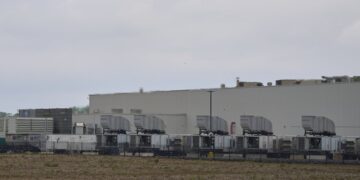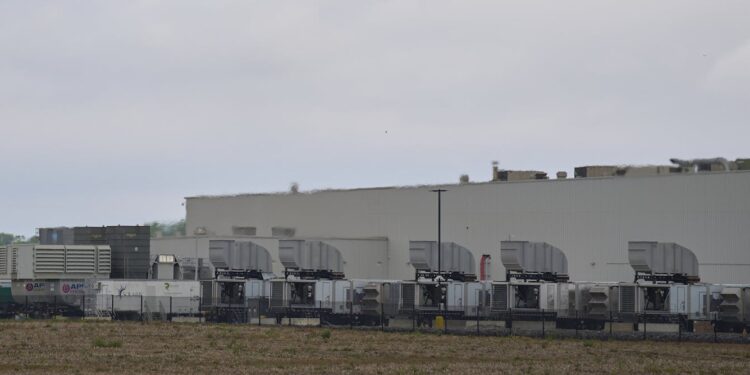Login to Continue Learning
Even before an Elon Musk-owned artificial intelligence company opened a data center in southwest Memphis, Tennessee, air pollution was so severe that residents of nearby neighborhoods were more likely to develop cancer from industrial pollutants than the general U.S. population. Our analysis found that air pollution did not significantly worsen due to the new data center.
The xAI Supercluster began operations on September 1, 2024, with natural gas turbines powering it before obtaining required air pollution permits. Environmental health researchers at the University of Memphis were concerned about potential additional pollution from the turbines and initiated an investigation.
Combustion from natural gas turbines releases a complex mixture of pollutants including fine particulate matter, nitrogen dioxide, sulfur dioxide, and hazardous chemicals like benzene, toluene, ethylbenzene, and xylenes. Each compound is linked to serious health issues such as respiratory illnesses, cardiovascular problems, neurological effects, cancers, and increased mortality rates.
Southwest Memphis, home to predominantly Black people with low incomes, has long faced industrial pollution issues, including PM2.5 levels near the maximum allowable concentration set by the U.S. government. There were no permanent air-quality monitors in close proximity to the xAI data center when it opened, so we developed a method combining measurements and calculations to determine pre- and post-data center air quality.
We focused on Boxtown Subdivision, 2½ miles east of xAI, and Riverview Subdivision, 6.8 miles northeast, known for high air pollution due to multiple industrial and traffic emissions sources.
Our study examined local air quality by analyzing company-provided details about turbines, satellite data showing fine-particle pollution before and after operations began, and ground-level air pollution in Boxtown using third-party monitors. The company reported that the turbines would emit 30 tons of sulfur dioxide and 94 tons per year of carbon monoxide.
Using a U.S. Environmental Protection Agency-recommended computer model, we calculated how these pollutants would spread across neighborhoods. Our analysis found minimal contribution to ambient air pollution in both areas, with pollutant concentrations remaining below national standards.
Fine particulate matter was estimated to increase about 1%, already above the national limit. In March 2025, based on our initial findings from computer modeling, we confirmed no significant changes through additional research and satellite measurements.
An independent lab monitored air quality for two days in June 2025, aligning closely with model predictions but not sensitive enough to detect trace levels of certain pollutants like benzene or sulfur dioxide. This limits direct comparison for those specific pollutants.
Our analysis suggests that at least as of our work, xAI’s natural gas turbines had not measurably degraded air quality in the surrounding neighborhoods. However, changes in equipment could alter emissions, and malfunctions might lead to excessive pollution until resolved.
Fine particulate matter remains a long-standing concern in southwest Memphis. If sustained community-based monitoring were available, it would provide clearer insights into pollution levels and their health impacts. We believe such monitoring by regulatory agencies and public health groups is beneficial for the residents of this area, regardless of the xAI data center’s presence.
Through our work, we aim to clarify specific facility effects on air quality while highlighting the importance of sustained scientific engagement in communities disproportionately affected by industrial emissions. By understanding and documenting environmental health challenges faced by southwest Memphis residents, we hope to contribute to their ultimate mitigation.



















